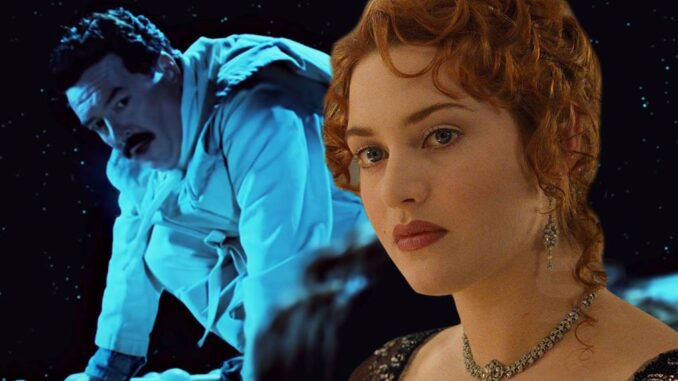
Titanic: The Bizarre True Story Behind the Man Rose and Jack Saw on the Bow
The scene is etched into cinematic history: Rose and Jack, arms outstretched against the vast expanse of the Atlantic, the wind whipping through their hair, proclaiming themselves "king of the world" from the sleek prow of the RMS Titanic. It is a moment of unparalleled freedom, romance, and soaring aspiration. Yet, for all its beauty and cinematic magic, this iconic image from James Cameron's Titanic implicitly poses a fascinating question that echoes a bizarre underlying truth: Who, or what, was the "man" they saw, or could have seen, on the bow? For while no literal, third-party figure shares their screen time at that precise moment of ecstasy, the very space they occupy – the bow – holds a bizarre, multi-layered story of humanity's hubris, vulnerability, and the unseen forces of fate.
On the surface, the notion of a "man" on the bow beside Rose and Jack might seem a misremembered detail from a dream. In the film, they are gloriously alone, owning the moment. However, the idea of a figure on that forbidden space, especially for passengers, points to the first bizarre truth: the bow of a ship like the Titanic was not a recreational area. It was a working space, a place of anchor chains, mooring lines, and the sharp, cutting edge of a vessel designed to slice through the waves. Passengers were generally restricted from this area for safety reasons. So, the very act of Rose and Jack being there, however romantically depicted, was an intrusion into a zone that was, in reality, austere, potentially dangerous, and certainly not designed for promenade. The "man" on the bow, then, could be the ghostly silhouette of maritime protocol, a silent testament to the disregard for convention that often accompanies grand voyages and the blurring lines between luxury and labor.
Delving deeper, the "man on the bow" can be seen not as a single individual, but as a composite, almost allegorical figure representing the immense human ambition and technological confidence that birthed the Titanic. He is the personification of the age’s belief in its own invincibility, the very spirit of "unsinkable" cast in the ephemeral form of a passenger gazing into the limitless horizon. This "man" is the architect, the engineer, the financier – all those who poured their ingenuity and wealth into creating a marvel of the modern world. The bizarre twist here lies in the profound irony: this very point, the elegant spearhead of human progress and mastery over nature, was precisely where nature struck back. The unseen "man" on the bow is thus a silent witness to humanity’s most audacious gamble, unaware that the very space he occupies is hurtling towards its own destruction. His gaze, if it existed, would be one of proud ignorance, a bizarre counterpoint to the impending doom lurking just beneath the icy surface.
Furthermore, the "man on the bow" could embody the chillingly prophetic, albeit unseen, presence of fate itself. Consider the stark reality: the bow was where the ship first kissed the iceberg, the point of impact that sealed its doom. It was the ship's most vulnerable spearhead. If a "man" truly stood there, he would be at the very epicenter of the collision, utterly exposed to the unseen force that would rip through the vessel’s steel skin. This interpretation lends a bizarre, almost mystical quality to the prompt. Was the "man" the ghost of foreboding, a spectral sentinel warning of the catastrophic encounter? Or perhaps he represented the hundreds of souls who, in their joyous anticipation of a new life in America, stood metaphorically on the precipice of their own demise, their dreams shattered by the cruel indifference of the ocean. This "man" is the silent prophet, the unwitting participant in a tragedy that would etch itself into the annals of history, a bizarre, almost too-perfect symbol of impending catastrophe.
Ultimately, the "man Rose and Jack saw on the bow" is not a forgotten historical figure but a potent symbolic entity, a ghost of a deeper narrative. He is the spirit of human hubris, the embodiment of technological pride, and the silent, foreboding harbinger of fate. The bizarre true story isn't about a specific individual, but about the very space they occupied – a space designed for mastery that became a site of ultimate vulnerability. The cinematic romance of Rose and Jack, soaring and free on that majestic prow, stands in stark, poignant contrast to the chilling reality of what that very spot represented: the point where human ambition met its match, where the unsinkable plunged into the abyss, leaving behind a legacy as bizarre and enduring as the mystery of the "man" who never truly was, yet always silently stood, on the bow of the Titanic.
